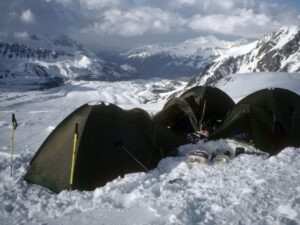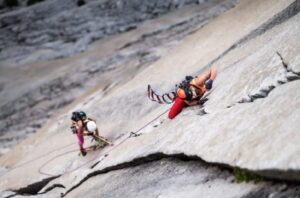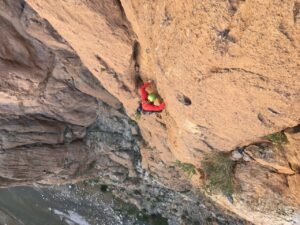On June 4, 2022, American paddler David Hillman slid his kayak at the headwaters of the Missouri River near Three Forks, Montana. When he finally beached his boat in the sand at Louisiana’s Burns Point campground 123 days later, he was exhausted and missing 16kg of body fat.
Hillman had just paddled over 5,794km along the full length of the Missouri to the Gulf of Mexico.
The Missouri River is the longest river in the United States, draining a watershed of over 1.3 million square kilometres. It flows for 3,767km before joining the Mississippi River above St. Louis, Missouri. From there, it’s another 1,600km to the Gulf.
Along with the Mississippi, the Missouri has played a major role in North American travel and commerce for over 10,000 years. The historical nature of the river was one of the major attractions for Hillman.
“[The Missouri River] still retains much of its natural state, especially the upper sections. Seeing the river…as it looked like 200 years ago was appealing,” said Hillman in an interview with ExplorersWeb.
A lifetime of expertise
Hillman used a 22kg Current Designs Gulfstream kayak on his journey. His other gear, not counting food and fuel, weighed an additional 22kg. He carried 20 litres of water with him at a time and resupplied three times.

Hillman’s boat loaded down with gear. Photo: David Hillman
Hillman has paddled for 45 years, so was well prepared to tackle the Missouri. He’s an active whitewater slalom kayak racer and an American Canoe Association Level 4 whitewater kayak instructor. All that experience came in handy for reading river conditions and paddling safely. While there was essentially no whitewater to deal with (the river is at a 10-year low), he had to dodge many 100-tonne barges. Other hazards included heat, humidity, sunburn, heat rash, and friction burns.
“The most difficult part of the trip was the Mississippi River section from St. Louis to Memphis. I had been on the river for over 90 days, I was paddling eight hours a day, the river was huge, so interaction with the shore/wildlife was fairly minimal, and nearly all the towns were not on the river, in contrast to the Missouri River portion of the trip,” Hillman said.
“Mentally and physically, it was a grind that took a toll. My resupply in Memphis was huge in terms of keeping the trip in perspective and recharging my mental attitude.”
Unplugging from the world
Hillman took 30 non-paddling days during his trip — crucial for recovery and longevity on the river. His campsites were sandbars or established sites along the river. He camped for all but four of the 123 expedition days.
While paddling, Hillman chose not to listen to music, podcasts, or audiobooks. He opted instead to listen to the river.
“One of the aspects of the trip was to unplug from the electronic noise we have in our lives. [Also], listening to the river/water is pretty important for both navigation and safety, so I didn’t play any music while paddling.”

One of David Hillman’s campsites on the Missouri River. Photo: David Hillman
And while cell service was often nonexistent, Hillman had plenty of interaction with a community of long-distance paddlers also undertaking river journeys.
“There are anywhere from 10 to 15 paddlers that go from the Missouri River headwaters to St. Louis with maybe one or two paddlers continuing on to the Gulf of Mexico on any given year,” Hillman said.
“Both the Missouri River and Mississippi River paddler groups have very active Facebook pages/websites, which makes for a great communication mechanism for asking questions during a trip. Cell phone coverage is significantly improved once a paddler gets to the Missouri/Mississippi river confluence so I could get updates on other paddlers making their journeys. I met a number of the Missouri River paddlers during my trip, participated in the Missouri River Paddler (MORP) Rendezvous during my journey, and was privileged to run across four of the Mississippi River thru-paddlers during the last few weeks on the Mississippi.”
‘I wasn’t really alone’
Asked about favorite moments from the trip, Hillman referenced the major navigational achievements — reaching the Mississippi/Missouri confluence and the Gulf. Spotting five-metre-long alligators along the southern portion was also a highlight. But Hillman said that the journey wouldn’t have been possible without lots of help.
“I had a whole gaggle of people watching me go down the river,” he said. “I wasn’t really alone.”

Spotting large alligators on the southern portion of his trip was a highlight for Hillman. Photo: David Hillman.
Strangers were also quick to help. River angels — volunteers known for helping long-distance river travelers — were a physical and emotional balm.
“I want to thank all the river angels, fishing boats, and other folks who helped me,” Hillman said. “So many awesome people who provided encouragement and support.”






